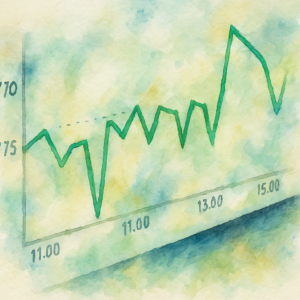Improve your French listening skills with this clip of French in real life. How do you introduce an embarrassing story? Maybe it’d be the same in French. Set your level and fill in the blanks as you listen! Some words that stood out to me: “assez”, “c’est-à-dire”, “donne une image”, and “effrayant”.
Take the quiz, join the conversation.
Did you find this one challenging or easy? Did you hear something diffferent? What surprised you? What levels did you complete? Comment below and share what’s opening up for you with this quiz.
Learn French with a podcast snippet! This clip is is from Transfert s01ep01. We do not own the content. Listen to the entire episode here.
The above audio sample and transcription is from Transfert s01ep01. We do not own the content. Listen to the entire episode here.
quite
What’s opening up for you with this clip?
The snippet in English
Find a translation of this snippet here, how much of this did you hear?
En fait, le problème, c’est que c’est une histoire qui est assez euh embarrassant, c’est-à-dire qu’elle donne une image de moi assez effrayant.
In fact, the problem is that it’s a story that’s rather embarrassing, in other words, it gives a rather frightening image of me.
The above translation from Deepl
What does “assez” mean?
“Assez” is a French adverb that translates to “enough” or “quite” in English. It is used to indicate a sufficient quantity or degree of something. Unlike the English filler word “like,” “assez” is not used as a speech filler but has specific meanings related to quantity, degree, or comparison.
Usage and Context:
- Indicating Sufficiency: Used to express that there is an adequate amount or degree of something.
- Example: “J’ai assez mangé.” (I have eaten enough.)
- Expressing Degree: Can also be used to mean “quite” in the sense of moderately or fairly.
- Example: “Il est assez intelligent.” (He is quite intelligent.)
Comparison with English “Like”:
- Not a Filler Word: Unlike the English “like,” “assez” is not used as a filler word in casual conversation. It always serves a specific purpose to convey sufficiency or degree.
- Specific Usage: “Assez” is used more precisely than the versatile and often informal “like” in English.
Cultural Notes:
- In French, “assez” is commonly used in everyday language and is a straightforward way of expressing the concepts of adequacy and moderation.
In Summary:
“Assez” means “enough” or “quite” in French and is used to indicate a sufficient quantity or degree, or to express moderation. It is not a filler word like the English “like,” but rather has specific meanings relating to adequacy and degree. The word is a standard part of French vocabulary used in various contexts to convey sufficiency or a moderate degree of something.
What does “c’est-à-dire” mean?
“C’est-à-dire” is a French expression that translates to “that is to say” or “in other words” in English. It is used to clarify, specify, or rephrase something that has just been mentioned.
Usage and Context:
- Clarification or Specification: Often used when providing a more detailed explanation or a clearer version of a previous statement.
- Example: “Il a des idées progressistes, c’est-à-dire qu’il soutient le changement social.” (He has progressive ideas, that is to say, he supports social change.)
- Introducing a Restatement: Useful for introducing a restatement or a more precise explanation.
- Example: “Nous partons en fin de semaine, c’est-à-dire vendredi.” (We are leaving at the end of the week, in other words, on Friday.)
In Summary:
“C’est-à-dire” means “that is to say” or “in other words” in French, used to clarify, specify, or rephrase something previously mentioned. It’s a commonly used expression in French for introducing a more detailed explanation or a clearer version of a statement, emphasizing precision and clear communication.
What does “donne une image” mean?
The phrase “donne une image” in French translates to “gives an image” in English. It’s used to describe how something presents or portrays a particular appearance, impression, or representation.
Usage and Context:
- Conveying Representation: Used to talk about how a person, organization, or event projects a certain image or impression.
- Example: “Cette campagne publicitaire donne une image positive de la marque.” (This advertising campaign gives a positive image of the brand.)
- Reflecting Perception: Can also refer to how something is perceived or seen by others.
- Example: “Son attitude donne une image négative.” (His attitude gives a negative image.)
Similarity to English:
- The usage of “donne une image” in French is quite similar to the English expression “gives an image.” Both phrases are used to discuss the portrayal or perception of something.
In Summary:
“Donne une image” means “gives an image” in French and is used similarly to the English expression. It describes how something or someone presents or is perceived, in terms of appearance, impression, or representation. The phrase is commonly used in contexts related to portrayal, perception, and public image.
What does “effrayant” mean?
“Effrayant” is a French adjective that translates to “frightening” or “scary” in English. It’s used to describe something that induces fear, alarm, or is intimidating.
Usage and Context:
- Describing Scary Entities or Situations: Applied to objects, situations, or stories that evoke fear or anxiety.
- Example: “Un film effrayant.” (A scary movie.)
- Masculine Form: As “effrayant” is the masculine form, it’s used with masculine nouns.
- Example: “Un bruit effrayant.” (A frightening noise.)
Grammatical Structure:
- Adjective: Modifies nouns and agrees with the gender and number of the noun it describes.
- Feminine Form: The feminine form is “effrayante.”
In Summary:
“Effrayant” means “frightening” or “scary” in French. It’s an adjective used to describe anything that causes fear or is intimidating, particularly in the context of stories, movies, or real-life scenarios. The word changes form to agree with the gender of the noun it modifies, with “effrayante” being the feminine version.
This clip is from the “Transfert” podcast
Produced by slate.fr, “Transfert” is a unique French podcast that offers an immersive listening experience. Each episode features real-life stories narrated by the people who lived them. These personal narratives cover a wide range of human experiences and emotions, providing listeners with profound insights into the lives and minds of others. The storytelling is intimate and engaging, making it an excellent resource for French language learners to improve their listening skills while connecting with compelling, authentic content.
Improving your French Listening Comprehension with Podcasts
On this site, fast spoken French is finally accessible to all levels. The tool break podcasts into short clips each set to transcription fill-in-the-blank practice. My favorite practice in class is always dictées. While they can seem overwhelming at first, the confidence boost and skills payoff for doing the work pays off. They’re perfect for anyone at any level, from advanced students to those just starting.
We use podcasts and our practice exercises to make it possible for anyone, anywhere to immerse in French with fun and ease. Join us and enjoy French, one short clip at a time. Let’s learn together!
Make the most of the site:
- Daily Podcast Listening: Start your day with a French podcast from our collection. Choose episodes that align with your interests to keep it engaging.
- Active Listening Practice: As you listen, try to pick out key phrases and vocabulary. Use our daily quizzes to test your understanding and reinforce learning.
- Repeat and Shadow: Listen to the same podcast segment multiple times. Try to mimic the pronunciation and intonation to improve your spoken French.
- Note-taking: Jot down new words or phrases you encounter. Review these notes regularly to enhance vocabulary retention.
- Reflect and Respond: After each episode, summarize the main points in French, either in writing or aloud. This helps in consolidating your learning and improving your expressive skills.
- Read More:
- True Beginner or A1 Learners: discover tips learning with podcasts at an introductory level.
- Discover all the podcast clips on FrenchIRL organized by level.
- Top Tips: Here’s how I make the most of my own site.
I created the French In Real Life project because I wanted to understand more than just my teacher and youtubers who cater to learners. I wanted to understand the French I hear in France. I hope you can benefit as much as I have. Become a supporting member for access to all clips.
Improve your French listening skills with this clip of French in real life. How do you introduce an embarrassing story? Maybe it’d be the same in French. Set your level and fill in the blanks as you listen! Some words that stood out to me: “assez”, “c’est-à-dire”, “donne une image”, and “effrayant”.
Take the quiz, join the conversation.
Did you find this one challenging or easy? Did you hear something diffferent? What surprised you? What levels did you complete? Comment below and share what’s opening up for you with this quiz.








